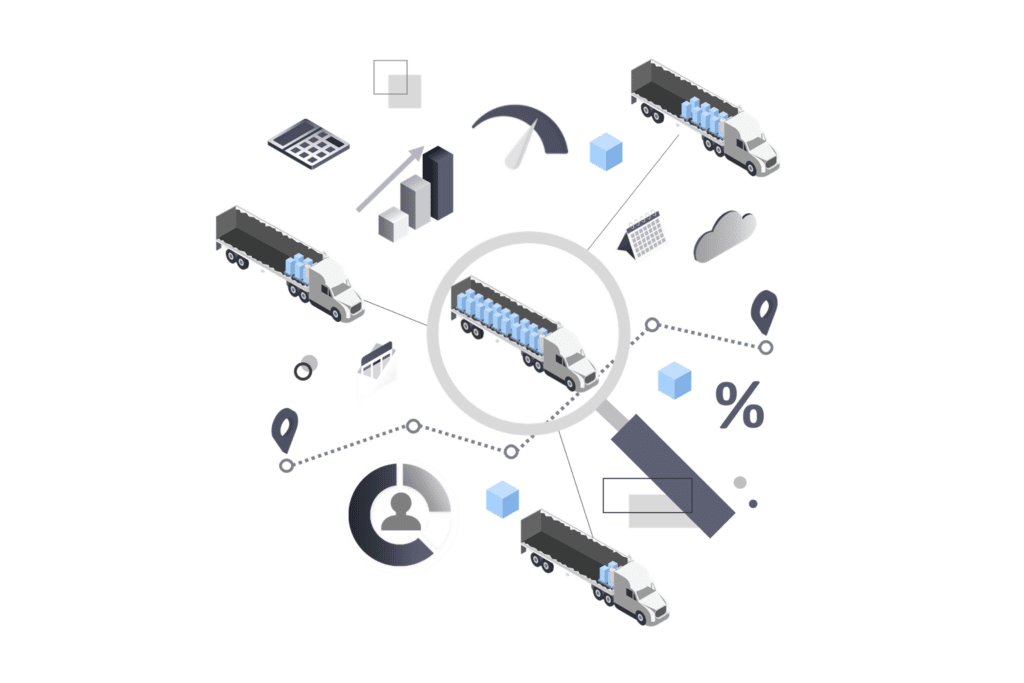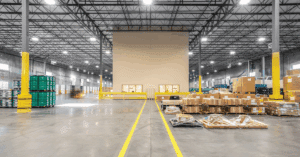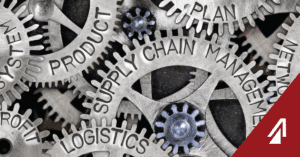Trucking is one of the most vital portions of the United States economy today – every single industry is affected by it. On average, trucks haul roughly 71% of all freight tonnage in the US (about 10.5 billion tons of freight) each year. However, with the US economy strengthening the last few years, that number is rapidly increasing. Currently, there are 3.6 million heavy-duty Class 8 trucks on the road and 3.5 million truck drivers, but there are not enough to match the demand in the market today. In fact, the American Trucking Associations (ATA) estimates that as many as 890,000 drivers will be needed in the next decade. Check out this guide below to see what else is going on in modern trucking.
What is Happening?
Every year, the American Transportation Research Institute (ATRI) issues a survey that lays out the top things concerning the trucking industry today. Each year the top concerns consistently are:
Compliance, Safety, and Accountability
Transportation Infrastructure, Congestion, and Funding
Each of these concerns received a considerable number of responses and organizations like the ATA and ATRI are investigating strategies to combat them.
Driver Shortages – Concern
Currently, it is estimated that there are 3.5 million truck drivers in the US, but not all of those drivers handle heavy tractor trailer loads for local or over-the-road shipments. The Bureau of Labor statistics estimates that number to be nearer to one million. This indicates, according to the ATA, that the market is short approximately 50,000 drivers. Some of the main reasons for this shortage are driver demographics, new regulations, and driver lifestyle. Many companies have been trying to combat the shortages by improving driver compensation (wage increases, benefit increases, bonuses, etc.) but so far these efforts have not proved enough to be successful filling the open positions.
Driver Shortages – Possible Solutions
Incentives alone are not enough to attract new talent into the driving profession, so ATRI and ATA are looking at other alternatives. One of the most effective and promising solutions is the DRIVE-Safe Act. This is a bill proposed in the US House of Representatives that would establish an apprenticeship program that would allow drivers aged 18-20, with a CDL, to drive tractor trailer shipments interstate. Currently, interstate drivers must be 21 years old, but younger CDL holders may drive intrastate. The apprenticeship would act as a training/confirmation program for drivers’ skills and certify them for nationwide transit.
Other solutions include working with the Department of Transportation and Department of Labor to expand current apprenticeship programs as well as study current 18-20 year old CDL holders.
Hours-of-Service – Concern
Hours-of-Service (HOS) continues to be a hot-button issue for many in the trucking industry. Some drivers push for different downtime patterns and others look for sleeper berth flexibility. At this time, drivers must take at least eight consecutive hours in their sleeper berths. Also they must spend an additional two and another non-driving capacity. This is a rigid standard breakdown on hours that often causes disruptions for drivers. HOS has been such a continuing top concern that it has made ATRI’s top 10 list for the past eight years in a row.
Hours-of-Service – Possible Solutions
In regards to the sleeping berth issue, ATRI and ATA are working with USDOT to have more flexibility with their sleeping schedule. They are asking for a 6 hour-4 hour breakdown instead. That way, drivers can sleep when they are tired and also avoid overly congested drive times in major metropolitan areas.
Another significant solution involves a study on the safety and economic impact of customer detention on truck operators. This is following a recent release from USDOT saying that drivers increase their odds of crashing as well as reduce their incomes with substantial “dwell time.” However, USDOT admits that their current data is insufficient to make a completely definitive statement on this at this time. It is possible that the ELD logs will provide stronger data in the near future.
Driver Retention – Concern
Driver turnover is increasing with significant numbers of drivers retiring or leaving trucking for another profession. Replacement costs are high as well as incentives to retain current drivers.
Driver Retention – Possible Solutions
Currently, the best solutions are to study the issue more. Researchers wish to study correlation between driver compensation and productivity as well as current carrier retention programs. Then, they suggest that a web page be produced of best practices for driver retention based off of their studies.
Truck Parking – Concern
Truck parking has become a larger concern over the last few years in light of the ELD mandate. More trucks must waste drive time looking for a parking place, exceed HOS rules, or park in unsafe zones. Often today, parking facilities are overcrowded or non-existent so trucking associations are looking into ways to mitigate this.
Truck Parking – Possible Solutions
First, trucking associations are looking for possible parking locations along major interstates and highways as well as within major city areas. They want to find places to build or expand parking structures as well as re-open closed structures. Along this line they are urging private businesses as well as the USDOT to invest in these areas to make parking safer and more efficient.
Second, these associations are working on educating the public about the hazards involved in closing these public facilities as well as encourage them to provide funding for development and expansion.
Lastly, they wish to study and implement technology that would relieve parking lot congestion and find real-time parking solutions.
Compliance, Safety, and Accountability – Concern
Currently, the largest concern in this area centers on the safety-scoring tests. Researchers were looking for a better test to understand and assess a carrier’s crash risk than the established BASICs scores test. They feel the original test has scoring flaws due to certain crash classifications and that the scoring process can unnecessarily negatively affect carriers. The National Academy of Sciences has produced a test that rates carriers based on Item Response Theory and produces a truer reflection of carrier performance.
Compliance, Safety, and Accountability – Possible Solutions
One of the first things the ATRI and ATA wish to do is advocate that FMCSA revise and reclassify a number of crash types as non-preventable. If many of these crashes are reclassified, ATRI suggests that many scores will be more accurately depicted.
Another suggestion is a restructuring of the current BASICs test to allow score reductions for carriers who voluntarily participate in preventative action programs like FMCSA’s Beyond Compliance. However, this may be a challenge as FMCSA is also suggesting they implement the Beyond Compliance measures as an eighth standard category in their BASICs system.
Driver Distraction- Concern
This is the first of the top 10 concerns that focuses on all drivers and not just those in the trucking industry. Since the development of smartphones, more and more motorists are operating with less caution and attention to their surroundings. Approximately 3,450 people were killed in 2016 in automobile accidents involving distracted drivers. Distraction is a safety hazard for all motorists – not just carriers.
Driver Distraction – Possible Solutions
Two of the top solutions go together to prevent distraction; advocate for national driving standards and encourage harsher penalties for violators. Many separate states have separate distraction standards and have varying levels of law enforcement for those standards. ATRI and ATA suggest that more nationalized standards be put in place to help motorists meet a uniform safety standard and ease the transition from state to state driving. In addition, law enforcement officers, across state lines, would treat violations the same and more severely.
Transportation Infrastructure, Congestion, and Funding- Concern
The US highway and interstate infrastructure is due for maintenance, adding considerable vehicle wear and tear to many of the nation’s trucks. Also in their current condition, the roads cause more congestion, waste fuel, and increase carbon emissions. The trucking industry would like to see more effort be placed on repairing and replacing deteriorated roads.
Transportation Infrastructure, Congestion, and Funding – Possible Solutions
Many in the industry have called for higher federal taxing of fuel or for direct-user fees. Automakers increasing vehicle fuel economy has reduced fill ups and have reduced tax revenue for highway funding. So, they would suggest that higher national taxes be implemented to mitigate the losses. Also, they call for additional funding programs to support the infrastructure.
Driver Health and Wellness- Concern
Drivers are becoming increasing concerned with their physical health and wellness. Nearly 20% of drivers cite health problems as their reason for leaving the industry. Many see the long hours and sedentary lifestyle as contributing factors to driver turnover and are looking for ways to combat those factors.
Driver Health and Wellness – Possible Solutions
Drivers are interested in seeing more fitness and healthy eating options at rest areas, truck stops, and other stopover points. More often, nowadays, travel plazas are offering traditional hot meals and fast food options, as opposed to microwaveable junk food. But, more drivers claim they would like to see healthier choices from these establishments. Also, many would be interested in more exercise facilities at these stops.
The ATRI and ATA are also striving for further research and analysis of driver health issue causes and solutions as well as effectiveness of current driver health and wellness programs.
Economy – Concern
Trucking, today, has a few concerns with the economy. First, the US Economy has expanded more quickly than the trucking industry can support without more drivers, resources, etc. As a result, costs are increasing. Another concern involves uncertainty around the state of the North American trade climate. First, the government replacing NAFTA with USMCA caused uncertainty as well as the trade dispute with China.
Economy – Possible Solutions
The trucking industry fully supports stimulating the economy, and as it grows will strive to find alternate methods of recruiting drivers and moving additional freight. However, they suggest that the government continue to reduce unnecessary regulations that add to industry costs needlessly.
Also they want to study the effect of e-commerce on the trucking industry.
The trucking industry is one of the most fundamentally important portions of the United States economy. It responsible for moving the majority of the country’s freight and also employing nearly 15% of the US workforce in one way or another. Today, it is facing numerous concerns, and organizations like the ATRI and ATA are constantly working to combat them.
Remember to check back with us periodically to stay in the know with the latest trends, concerns, and solutions in trucking.



